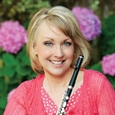
During marching season piccolo players should keep a few things in mind. Whether you will march in your school’s band or teach a piccolo player the following tips will help produce the best results in this demanding environment.
Memorization
All musicians memorize their parade marches, but it is quite helpful to also memorize field show music. There are lyres that hook onto the left wrist or forearm to hold music, but they can be quite heavy and cumbersome. Having a lyre attached to the piccolo is not the best option either as the instrument is so tiny there is not much weight to act as a counterbalance. Memorization is by far a better option.
Instrument
Make sure the instrument is in good playing condition. All pads should be set flush in the key cups, and the pads should not extend down into the tone holes. The cork in the headjoint should be in the correct position, secure and tight against the tubing at the top of the crown. Instruments made out of resin composites do well in the various weather conditions. Silver or silver-plated instruments are also a good choice.
It is advisable to save wooden piccolo for indoor concerts only, so the wood does not become exposed to excessive heat, cold, or moisture from rain, snow or fog. My high school was very close to the Pacific Ocean, and there were some half-time shows where the fog was so thick we could not even see the conductor on the sidelines.
Be aware of the intonation tendencies of the instrument by checking with a tuner (long tones at mf, p, and f in every octave are a basic starting place.) Keep in mind the role that temperature plays in affecting intonation. When it is very cold outside, the instrument will be flatter than usual, so adjust accordingly.
Swab the piccolo out more often in cold weather since condensation will build more quickly when the temperature of the breath is a warmer than the outside air temperature.
Hearing Protection
Marching bands are loud. If the section includes a number of piccolo players, it is a good idea to get a set of earplugs for use in a tight formation as a neighbor’s piccolo may be extremely close to your ear (See Flute Talk, March 2011 for information about Hearing Protection). Hearing protection is also a good idea as you might find yourself directly in front of the brass or percussion sections.
Advice for Flutists
Some bands choose to march only piccolos instead of flutes since the piccolo projects and adds a distinctive sparkle to the band’s upper register. For those who are primarily flutists, remember to place the piccolo slightly higher on the lower lip than the flute. Since there is a great deal of movement while playing (even dance routines on the field are becoming more common), secure the instrument on the lower lip so that it does not move during the drill routine. The embouchure will be slightly looser and the aperture area is a little more forward in order to channel the air into the tiny backwall area. Do not allow the top lip to be held tightly against the front teeth.
Articulation usually needs to be slightly more exaggerated outdoors, so if a note is marked with an accent, give it a little kick from the diaphragm as well so the effect will be perceived. Marching band style playing usually requires more separation between notes, so be listening to match note lengths with other treble instruments. Vibrato should be used to blend within the piccolo section. Try not to use a slow, wide vibrato that sticks out, but instead, match the overall sounds being produced by your section.
Posture
The postural demands of marching band for piccolo players are quite specific. For example, the director may ask the player to play with the piccolo held parallel to the ground. Obviously certain things are required for the sake of the show and do not take into consideration how the piccolo is actually played in the concert hall. Wearing shakos or headgear of any kind requires the head to be level and in perfect alignment. However, when you play piccolo during the concert season, remember to return to the correct playing position which means the head will be turned to the left and slightly tilted to the right.
Playing in marching band position with the head held high and level means that the column of the air will hit the wall of the embouchure hole too high. This will cause the pitch to be sharp. If this is the case, pull out the headjoint when marching so you are in tune with the band.
Marching piccolos players are often asked to march and play with the elbows raised. When you return to the concert hall, play with your arms relaxed with the tip of the elbows pointing toward the floor.
Little Extras
Keep a swab with you tucked in your jacket pocket for a quick swab when you have some down time. I like the piccolo flag styles which have a piece of chamois permanently attached to a stick that is long enough to go through the piccolo even as it remains in one piece.
If a bubble forms when playing, tilt the piccolo and blow rather forcefully using a p sound (this helps get the air going really fast) to break the bubble that is blocking the tone hole.
When wearing a uniform with gloves, ask if you can cut the fingertips out of the gloves to make better contact with the keys. This will also prevent the instrument from accidentally slipping out of your hands, a problem I always seemed to face when I wore full dress gloves.
Photo courtesy of Henderson State Univ.






